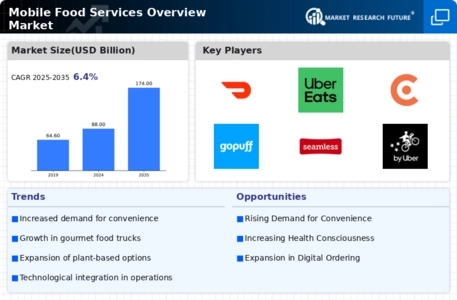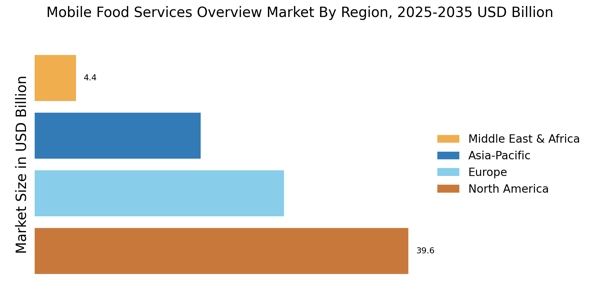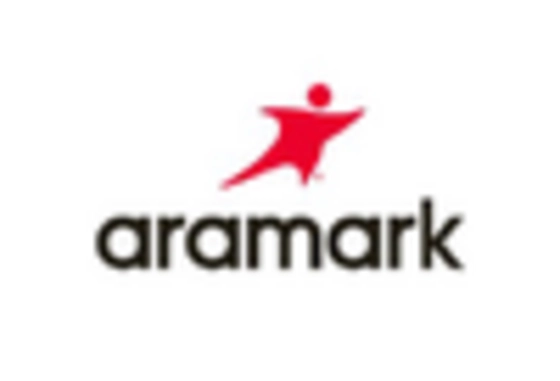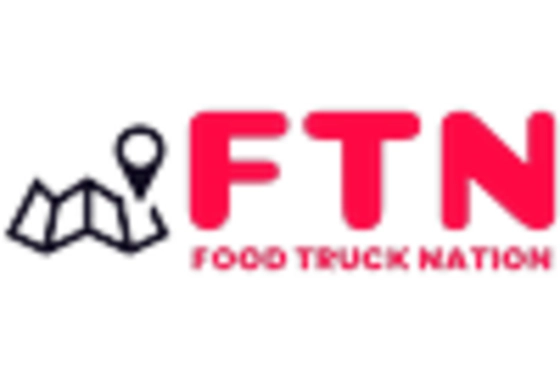The Mobile Food Services Overview Market is characterized by a dynamic competitive landscape, driven by evolving consumer preferences and the increasing demand for convenience. Key players such as Compass Group (GB), Aramark (US), and Sodexo (FR) are at the forefront, each adopting distinct strategies to enhance their market positioning. For instance, Compass Group (GB) has focused on sustainability initiatives, integrating eco-friendly practices into its operations, which resonates with the growing consumer emphasis on environmental responsibility. Meanwhile, Aramark (US) has been investing in digital transformation, enhancing its service delivery through technology, thereby improving customer engagement and operational efficiency. These strategies collectively contribute to a competitive environment that is increasingly centered around innovation and responsiveness to market trends.
In terms of business tactics, companies are increasingly localizing their operations to better cater to regional tastes and preferences. This localization, coupled with supply chain optimization, allows for greater flexibility and responsiveness to consumer demands. The market structure appears moderately fragmented, with several key players exerting influence while also facing competition from smaller, niche operators. This fragmentation fosters a competitive atmosphere where innovation and customer service are paramount.
In September 2025, Sodexo (FR) announced a partnership with a leading technology firm to develop an AI-driven platform aimed at enhancing food service efficiency and customer experience. This strategic move underscores Sodexo's commitment to leveraging technology to streamline operations and improve service delivery, positioning the company favorably in a market that increasingly values technological integration.
Similarly, in August 2025, Aramark (US) launched a new mobile app designed to facilitate on-the-go ordering and payment for its food services. This initiative not only enhances customer convenience but also aligns with the broader trend of digitalization within the food service industry. By prioritizing user experience through technology, Aramark is likely to strengthen its competitive edge in a rapidly evolving market.
Moreover, in July 2025, Compass Group (GB) expanded its portfolio by acquiring a regional food truck operation, thereby diversifying its service offerings and tapping into the growing popularity of mobile food services. This acquisition reflects a strategic move to enhance market presence and cater to the increasing consumer demand for diverse dining options.
As of October 2025, the competitive trends within the Mobile Food Services Overview Market are increasingly defined by digitalization, sustainability, and the integration of advanced technologies such as AI. Strategic alliances are becoming more prevalent, enabling companies to pool resources and expertise to enhance service delivery. Looking ahead, it is anticipated that competitive differentiation will increasingly pivot from traditional price-based strategies to a focus on innovation, technological advancement, and supply chain reliability, thereby reshaping the landscape of mobile food services.


















Leave a Comment